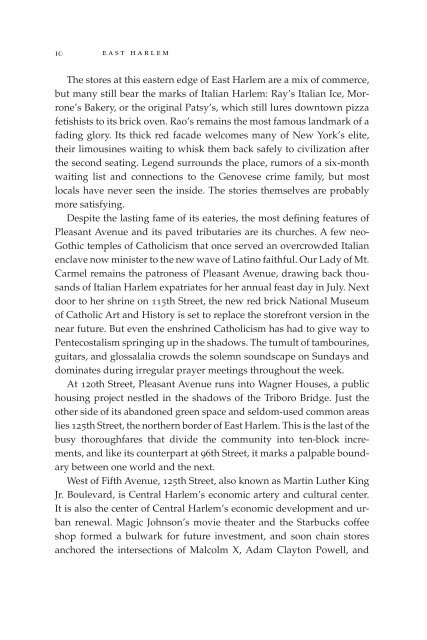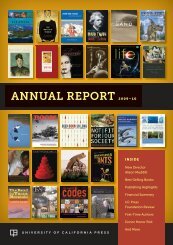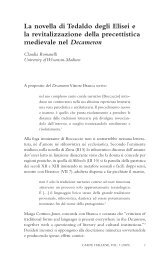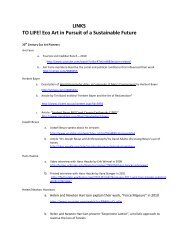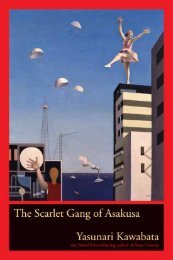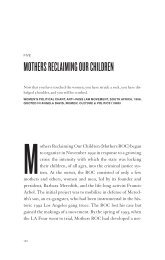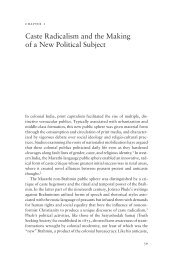Read Chapter 1 (PDF) - University of California Press
Read Chapter 1 (PDF) - University of California Press
Read Chapter 1 (PDF) - University of California Press
Create successful ePaper yourself
Turn your PDF publications into a flip-book with our unique Google optimized e-Paper software.
10<br />
east harlem<br />
The stores at this eastern edge <strong>of</strong> East Harlem are a mix <strong>of</strong> commerce,<br />
but many still bear the marks <strong>of</strong> Italian Harlem: Ray’s Italian Ice, Morrone’s<br />
Bakery, or the original Patsy’s, which still lures downtown pizza<br />
fetishists to its brick oven. Rao’s remains the most famous landmark <strong>of</strong> a<br />
fading glory. Its thick red facade welcomes many <strong>of</strong> New York’s elite,<br />
their limousines waiting to whisk them back safely to civilization after<br />
the second seating. Legend surrounds the place, rumors <strong>of</strong> a six-month<br />
waiting list and connections to the Genovese crime family, but most<br />
locals have never seen the inside. The stories themselves are probably<br />
more satisfying.<br />
Despite the lasting fame <strong>of</strong> its eateries, the most defining features <strong>of</strong><br />
Pleasant Avenue and its paved tributaries are its churches. A few neo-<br />
Gothic temples <strong>of</strong> Catholicism that once served an overcrowded Italian<br />
enclave now minister to the new wave <strong>of</strong> Latino faithful. Our Lady <strong>of</strong> Mt.<br />
Carmel remains the patroness <strong>of</strong> Pleasant Avenue, drawing back thousands<br />
<strong>of</strong> Italian Harlem expatriates for her annual feast day in July. Next<br />
door to her shrine on 115th Street, the new red brick National Museum<br />
<strong>of</strong> Catholic Art and History is set to replace the storefront version in the<br />
near future. But even the enshrined Catholicism has had to give way to<br />
Pentecostalism springing up in the shadows. The tumult <strong>of</strong> tambourines,<br />
guitars, and glossalalia crowds the solemn soundscape on Sundays and<br />
dominates during irregular prayer meetings throughout the week.<br />
At 120th Street, Pleasant Avenue runs into Wagner Houses, a public<br />
housing project nestled in the shadows <strong>of</strong> the Triboro Bridge. Just the<br />
other side <strong>of</strong> its abandoned green space and seldom-used common areas<br />
lies 125th Street, the northern border <strong>of</strong> East Harlem. This is the last <strong>of</strong> the<br />
busy thoroughfares that divide the community into ten-block increments,<br />
and like its counterpart at 96th Street, it marks a palpable boundary<br />
between one world and the next.<br />
West <strong>of</strong> Fifth Avenue, 125th Street, also known as Martin Luther King<br />
Jr. Boulevard, is Central Harlem’s economic artery and cultural center.<br />
It is also the center <strong>of</strong> Central Harlem’s economic development and urban<br />
renewal. Magic Johnson’s movie theater and the Starbucks c<strong>of</strong>fee<br />
shop formed a bulwark for future investment, and soon chain stores<br />
anchored the intersections <strong>of</strong> Malcolm X, Adam Clayton Powell, and


